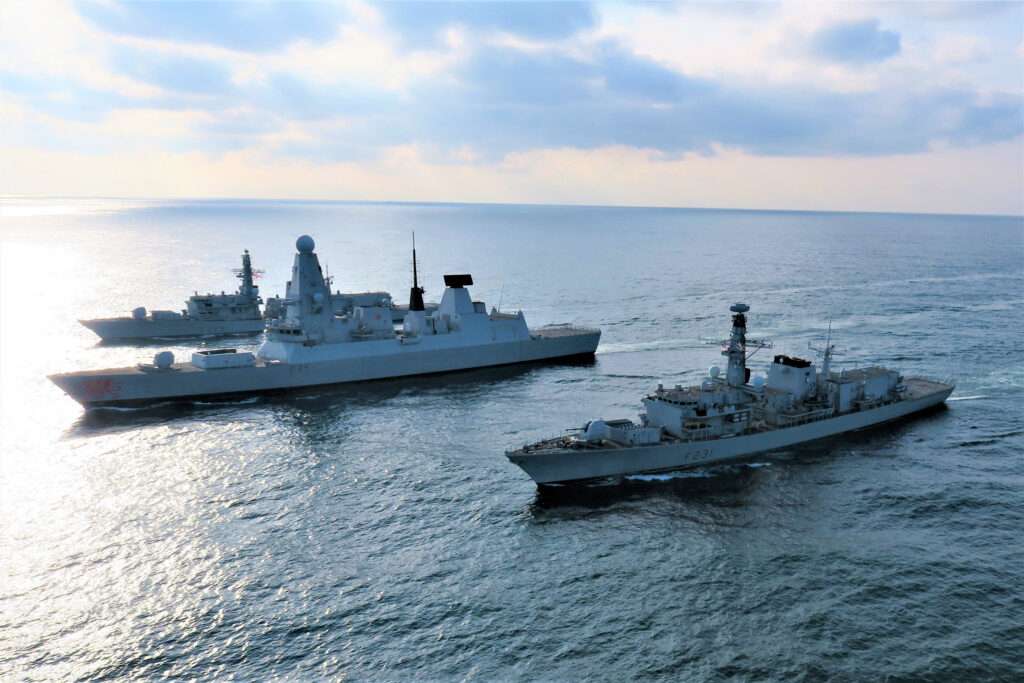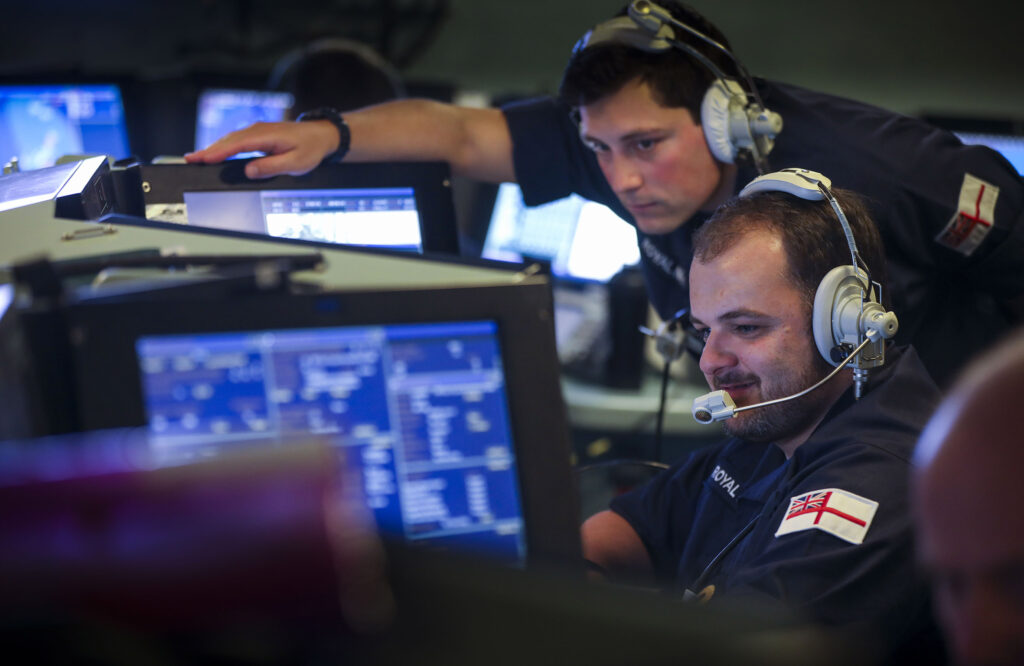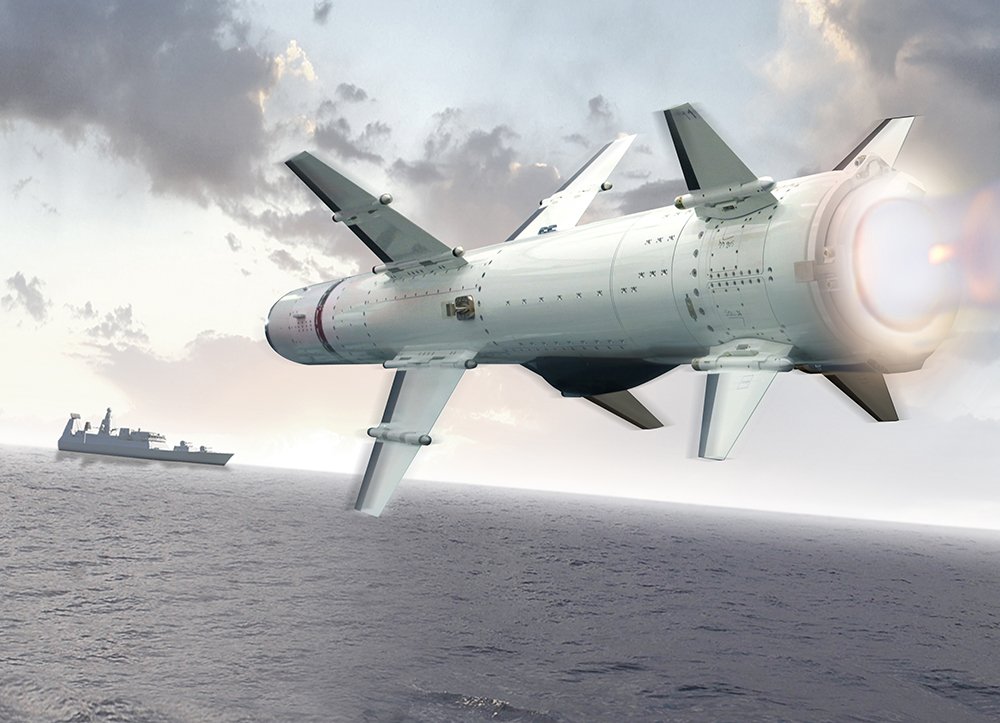The Royal Navy is using artificial intelligence for the first time at sea in a bid to defeat missile attacks.
According to a press release issued by the Royal Navy, leading-edge software is being tested at sea against live missiles during the largest exercise of its type off the coasts of Scotland and Norway.
Involving more than 3,000 military personnel, Formidable Shield tests the ability of NATO warships to detect, track and defeat incoming missiles, from sea-skimming weapons travelling at twice the speed of sound just above the waterline, to ballistic missiles. Three Royal Navy warships are taking part in the exercise, which runs until early June: destroyer HMS Dragon and two frigates, Lancaster and Argyll.

HMS Lancaster and Dragon are trialing artificial intelligence and machine learning applications which offer a glimpse of the future of air defence at sea. Experts from the Government’s defence laboratory Dstl and industry partners from Roke, CGI and BAE Systems are using the three-week exercise to test their ‘Startle’ and ‘Sycoiea’ systems.
Startle is designed to help ease the load on sailors monitoring the ‘air picture’ in the operations room by providing real-time recommendations and alerts.
Sycoiea builds upon this and is at the forefront of automated Platform and Force Threat Evaluation Weapon assignment, effectively allowing operations room teams to identify incoming missiles and advise on the best weapon to deal with them more quickly than even the most experienced operator.
Although experiments with artificial intelligence have been conducted before, this is the first time it’s been tested against live missiles, said Lancaster’s Weapon Engineer Officer Lieutenant Commander Adam Leveridge.
Lancaster’s Commanding Officer Will Blackett said the scale of Formidable Shield and the assets and technology involved – the latest drones, leading-edge missile systems and sensors – coupled with the best-trained sailors, scientists and technicians made the exercise a hugely beneficial experience for all.

“The scale of this endeavour is remarkable – NATO can bring some serious firepower to bear when it needs to and it is exciting to be part of the development of future tactics and equipment,” he added.
While Lancaster and Dragon trial technologies brand new to the Fleet, Argyll (the first ship in the Navy to be fitted with the Sea Ceptor air defence missile) has been testing upgraded software and developing tactics to push the limits of her Artisan Radar and Sea Ceptor as part of a task group.
Taking a quick break from dodging missiles the three Royal Navy ships found time to form up for a navigational exercise, demonstrating their ability to operate in close proximity to one another whilst conducting flying sorties with a Wildcat helicopter.
Naval Post mentioned the importance of artificial intelligence against incoming missiles in 2019.
Antiship Missile Defence
ASMD is a quite complicated process. It has lots of instruments, and all the instruments should work coherently. A successful ASMD needs developed sensors that can detect the missile (via Electonic warfare systems, close-in defence purposed radars etc.), softkill countermeasures (like CHAFFs, decoys etc.), hardkill countermeasures (missiles, guns, close-in weapon systems (CIWS)), manoeuvre abilities of the ship and of course the well-educated crew who can perform these measures perfectly.
The crew is needed to be so fast and they don’t have any chance to do wrong. Because when a missile’s trace is detected either at radar scope or at an electronic support device, you have a maximum of 1-2 minutes to be ready to perform countermeasures. While in a battle or a high-stress environment, ships probably would be in the alert mode because there would be a missile threat and requires high readiness. In this situation, the ship has a chance to survive. But the ship’s most vulnerable moment is at low-stressed moments. If an unexpected missile is detected (mostly terrorist attacks) and the ship wouldn’t be ready in time, it wouldn’t be easy to get rid of the missile.

Benefits of Artificial Intelligence in ASMD
A well-developed and skilful artificial intelligence computer can be ready to fight against guided-missile 24 hours a day. It doesn’t need rest and take nourishment, it’s on the watch every time. Without any input, it can communicate with sensors every time, never lets for latencies after detecting the threat. As we mentioned at the beginning of the article, ASMD is such a complicated process that needs not only skilful sensors but also a very well educated crew. After detecting a threat, reporting issues etc. could cause lethal latencies.

Artificial intelligence doesn’t have emotions. Fears and anxiety could tackle humans while tracking or engaging missile, but artificial intelligence doesn’t have such disadvantages. If artificial intelligence takes control, it decides the best action in milliseconds and starts the countermeasures in seconds, hardkill, softkill and manoeuvre together.
While developing a solution, artificial intelligence could detect faults of current systems while facing one and could give advice for remedy just after the threat is defeated.
We can write dozens of benefits of artificial intelligence while defending our ship against missiles. The most important issue, maybe it could be taken as a warning, AI should be under human control.
Check out Naval Library App to find out the specifications of Type 45 class destroyers.





